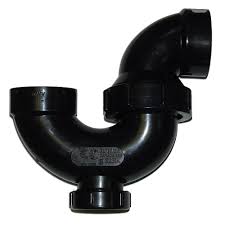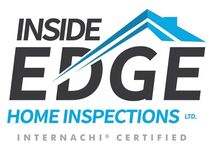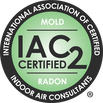Mike's Home Inspector BlogMichael Burfitt |
 Just as a house needs a way for water to get into a home, it also needs a way to get that water out of the home, so that brings in DWV or Drain, Waste and Vent Plumbing. As its name implies, it has three functions. They are… surprise…. to drain water, remove waste and provide venting. As mentioned previously, DWV plumbing looks straightforward but is actually a fascinating engineered system that usually needs a professional plumber to install properly. I will not bore you with all the details but here is the 101: All Fixtures Need a Trap (Except One) Did you know that all appliances in your home must have a trap, commonly known as a “P” trap? The “P” does not stand for “pee” (it is shaped like a sideways “P”) and it is not designed to catch rings (although that is a nice bonus) but is designed to keep sewer gases from entering the home. These gases are not only gross but in large quantities are extremely flammable. The only exception to this P trap rule is the toilet because it has a trap built into it. There are a bunch of other traps, such as S- traps, drum traps and bell traps that are no longer permitted and should be replaced. The System is Designed to Move Water AND Air While it is generally not visible to homeowners, in many cases the majority of DWV pipe does not carry any water at all. The system is designed to use gravity to move waste to the lower levels (and out of the home) but also needs air to both balance pressure (to prevent backflow) and allow sewer gases to escape. This is why almost all homes have a black pipe sticking out of the roof: to balance air pressure all allow that nasty sewer gas to escape. DWV Pipes are Different Than Supply Pipes While there is some overlap between supply and waste lines materials (i.e., you can use copper for both supply and waste pipes) the DWV pipes are larger and since the 1970s are usually made of plastic: either ABS (black) or PVC (white). There are plenty of hints that inspectors such as yours truly use to identify potential issues in the plumbing system. The two most obvious are bubbles or gurgling when flushing the toilet (indicating improper air venting) and a loose toilet, which will eventually lead to sewer gas entering the home. A home inspector can also advise you on whether further evaluation from a plumber is required to determine the root cause of the issue and make repairs as necessary. |
Archives
July 2024
Categories
All
|
|
Inside Edge Home Inspections Ltd.
Halifax, NS 902-209-9921 [email protected] Proudly Serving the HRM & Central Nova Scotia |

 RSS Feed
RSS Feed

